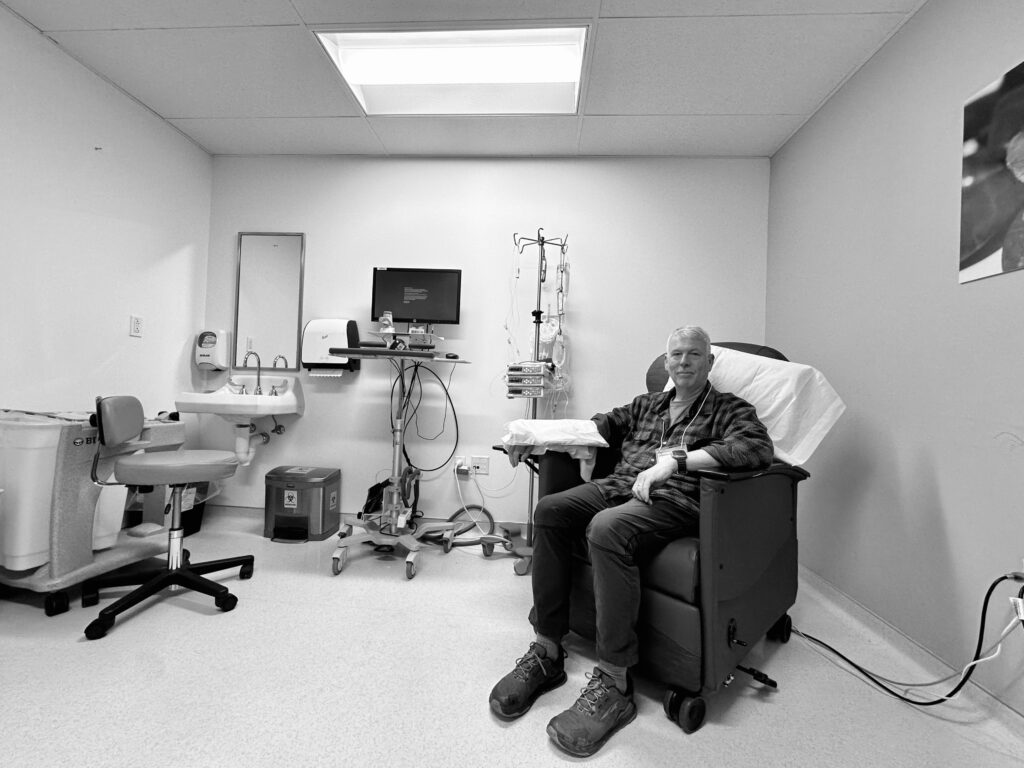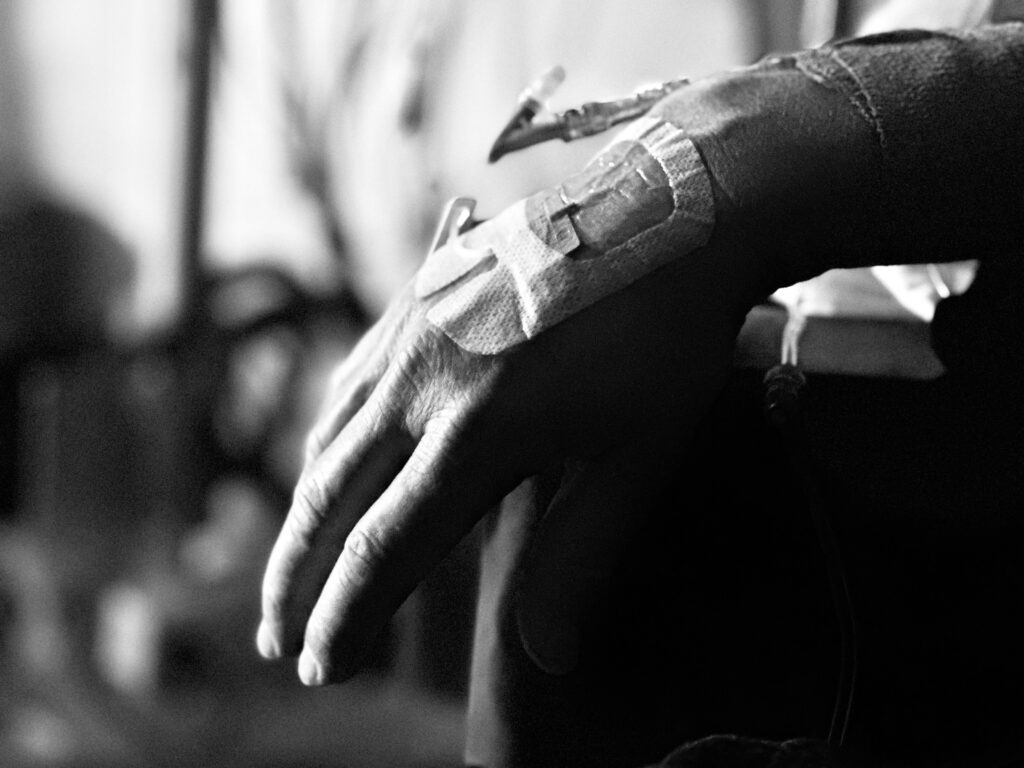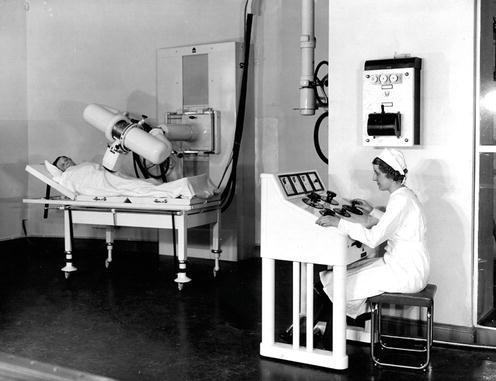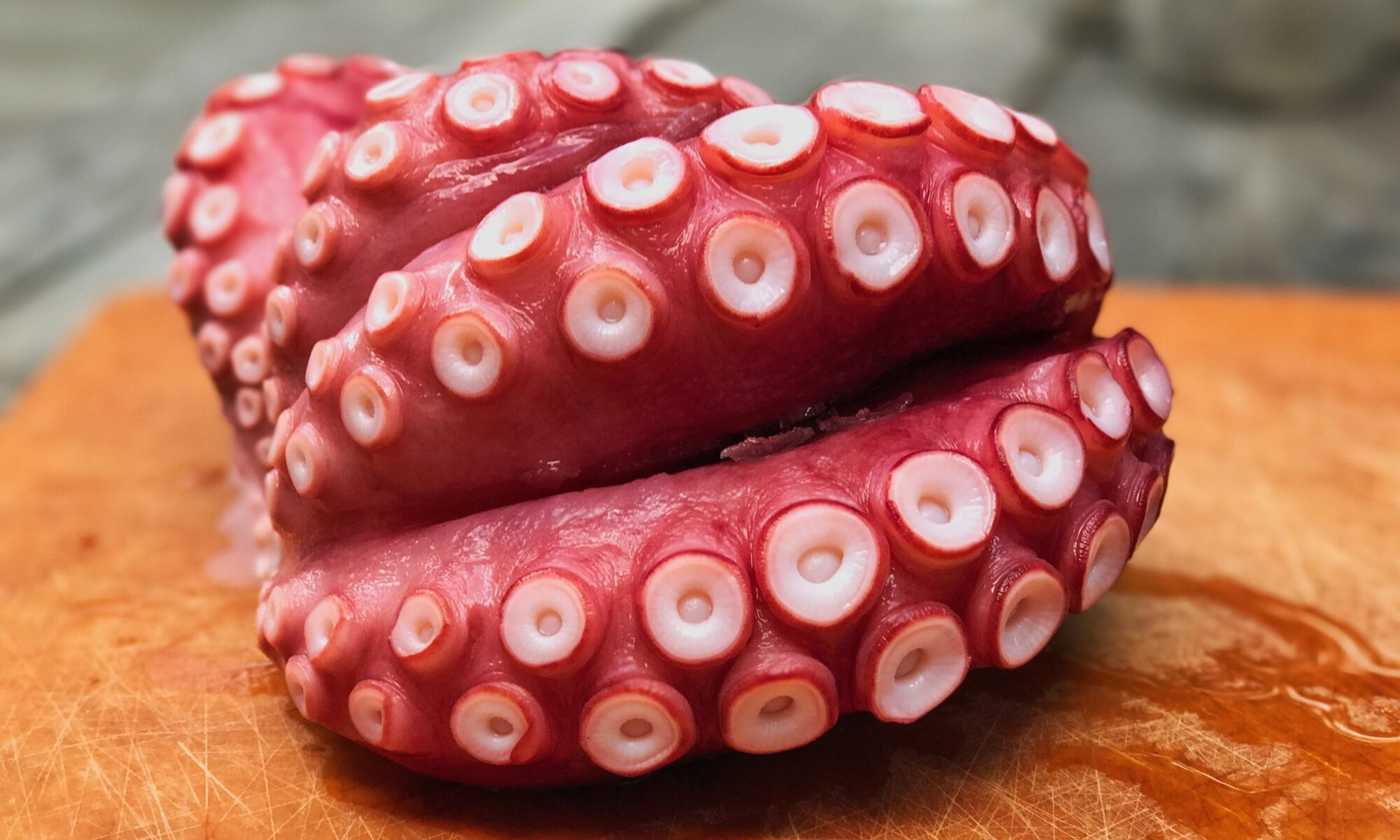Chemo
Up early with Amy for my first visit to chemo and radiation. After meeting RN Matt and getting some initial education, and after Matt struggled to get the hospital computer system out of “Legacy Mode” (at least its not written in COBOL), and a couple of “bumped valves,” I finally got situated in the Barcalounger with a pretty hefty hydration drip, followed by two separate anti-nausea drips. We turned out the lights and I drifted into a hazy nap. I noticed that I was making a brand new snoring sound, caused by the growing tumor.

Before falling asleep, I remember feeling profoundly comforted that medicine was finally flowing into my body – after this long month of news and prep and trepidation and existential question marks, treatment had finally begun. The room was warm and dark, and I had a blissful moment of feeling at-peace with the process.
A few short-but-strange dreams later, the light came on and Matt arrived with a bag of Cisplatin – the classic Chemo drug.
Cisplatin (which includes heavy Platinum ions) works by binding to and damaging the DNA in cancer cells, which prevents the cells from repairing or copying their DNA, ultimately leading to cell death. It is particularly effective against rapidly dividing cells, such as cancer cells.
Of course, Cisplatin will also damage DNA in the rest of the body, but it is most effective against rapidly dividing cells, so the goal is to provide the right dosage – enough to maximum damage to the rapid dividers, but not so much that good cells are overly affected as well.

Physically, I felt nothing. But what started happening at a cellular level at that moment was meant to transform my body, and thus my life.
Radiation
An hour later, Amy and I had an amazing homemade-style lunch in the hospital cafeteria (go Kaiser Oakland chefs, wow!), then headed over to Radiology. I changed into my gown, and waited all of ten seconds to be whisked onto the deck of the Starship Enterprise. The mask that had been formed against my face earlier was waiting on the bed of the giant sci-fi invention at the center of the room.
I laid down and they started their micro-adjustments, then went around my head turning screws to tighten the frame of my mask to the table bed – I will be at this precise millimeter in space every day for the next 35 days. Unfortunately, the mask was a bit too tight at the Adam’s apple, and choked a bit. They unscrewed everything and had me remove my t-shirt, then reinstalled my head. Losing the thickness of a t-shirt provided just enough comfort to not feel constricting.
I was able to see somewhat through the mesh of the mask, and enjoyed the illuminated underwater scene they’d installed on the ceiling to promote calm, and to help people feel less claustrophobic. They thought of everything.
The staff left the room (not even hospital staff are allowed to be around this much radiation, and have to move to a viewing space). The gantry started to spin, and fun whirring noises coming from every direction. I closed my eyes and listened to the music of the gears.

10 minutes later, it stopped. I thought it was over, but heard a voice on the mic say “Calibration looks great. We will now start treatment.” A nurse came into add one more marker to my mask. Five more minutes of whirring and it was over.
I felt nothing.
Growth has stopped
The amazing thing about both the chemo and the radiation is that you’re given these incredibly high doses of the sorts of things we spend our lives avoiding, and you don’t feel a thing. You’ll feel it for sure when side effects kick in, but they both have delayed effects.
Talking to Dr. Kelly afterwards, Amy asked “When do you think the tumor will actually start to shrink?” The doctor said it should be a few weeks, but then said something that sounded great: The growth has already stopped. That first double-treatment is a doozy and it kills the bulk of the cells on first contact. The next 35 days are important because we need to get all of them, not just some of them. The radiation is most effective on the cells at a specific stage in their individual development. The cell lifecycle is around a month long, so spanning treatment over 35 days ensures that we hit all of cells at their most vulnerable stage.
Once home, I was not particularly exhausted (as I’d expected to be), and we went on a short hike. I felt kind of super-powered, actually – no doubt due to the massive hydration, and metabolic effects of the chemo drugs. Or maybe I was just happy to feel this hope.

Great update!! Thanks for sharing!
Bruce Banner became The Hulk when exposed to gamma radiation …
Well if that really works, I’m going to have to get all new t-shirts since I’ll be busting out of these ones. I’ll take it.
The way that you are taking this journey is so inspiring, Scot, and while I know it must be f—ing frightening, the energy you’re displaying in accepting and harnessing the treatment for a positive outcome is so motivational. I know you will prevail, in spite of the difficulties that lie ahead. Here’s a neat saying for you, that I heard one of our language testing experts from Benin, a francophone country in Sub-Sahara share with me yesterday … when we were discussing the difficulties in life: “I choose to look up, and not down.” So keep looking up, Bubba! We love and cherish you! Yur Kizzin Kuzzin Dan
Thank you Daniel, for the encouragement and support. “I choose to look up, and not down.” – I love that so much, because it IS a choice! Even when you’re miserable, it’s a choice. Love Kizzin Kuzzin!
Thank you to both of you. It IS a choice. I too choose to look up, not down. Love you both so much, my son and ‘almost,’ son. Mom, Aunt Avis. :) Kudos..
That was an excellent quote, right? Loved that one from Dan.
I am so glad that the treatment has started. Cannot believe you went for a hike after all of that!! Wowzer! Great descriptions of the appointments as well.
Same! Things are finally happening. There’s only direction to move from here, and it’s up. Here we go.
Scott,
I can see us at the entrance doors of IAMB, throwing change into the gardens while looking at the turn down maids – planning nothing and escaping growing up. Sending love today.
Chris Bath
Oh now we’re in the wayback machine! Amazing memories of those times – before school to load up the tour bus, and back after school to unload the next one. And getting up to no good in between.
Thank you for taking us on this journey with you. I hope you take comfort from having us along for the ride. I know I take comfort from knowing more about what you’re going through.
Thank you Eli. It’s good to have you along.
The miracles of our times! Amazing. May the transformation begin!
I’m here for it!
Scot, this is so encouraging. Cancer cells, be gone! Thank you for your writing. Not only does it give those of us who love you an update and glimpse into what you’re experiencing, it also provides me my own encouragement to handle challenges I face (which are not nearly as difficult) as beautifully as you’re handling yours. Thanks to your friend Dan for the quote from Benin, “I choose to look up and not down.”
Marisa, I love to share, and I’m glad some readers find it valuable. Thanks for the support. Cousin Dan’s quote was awesome, right? Words to live by.
Only you would say you liked hospital food. I am glad you enjoyed it. Sounds like a dozy of a day. Easy on the activities, I am worried you will take it too far and get stuck with no energy. Make sure you have a rescue plan. Thanks for the post, as usual fantastic writing.
Oh but the twist here is that this was like no hospital food you’ve ever had – not your typical cafeteria gig – large Mexican family cooking together, clearly with love. That plate of pulled pork and cabbage was out of this world – better than restaurant quality, and super cheap for what we got. Totally a surprise. I’m taking it easy with energy, but also being mindful that energy begets energy – if I let myself curl up in a ball, it would only make things worse. All things in moderation. Thanks man.